 Subscribe
Subscribe- Login
-
/
Sign Up
- US Black Engineer
- >>
- Articles
- >>
- ASLA Elevates 19 Members to the Council of Fellows
|
Getting your Trinity Audio player ready...
|
The American Society of Landscape Architects (ASLA) has elevated 19 members to the ASLA Council of Fellows for their exceptional contributions to the landscape architecture profession and society at large. Election to the ASLA Council of Fellows is among the highest honors the ASLA bestows and is based on their works, leadership, management, knowledge, and service.
ASLA Fellows will be elevated during a special Investiture Ceremony later this year. Additional information about the 2020 Class of Fellows, as well as previous ASLA Fellows, is available on the ASLA Council of Fellows webpage.
2020 ASLA Fellows
 Haley Blakeman, ASLA
Haley Blakeman, ASLA
Louisiana State University, Baton Rouge, LA
Haley Blakeman has spent her career advancing the profession at every level—community, city, state, and national. During her ten years in leadership roles at the Center for Planning Excellence—a nonprofit honored with ASLA’s 2009 Olmsted Award—Haley dedicated her work to resiliency in climate change. In Louisiana, she has led essential work in over 25 communities. She developed policies and implementation projects advancing complete streets, from the city of Covington to impoverished, rural Madison Parish. Haley’s service to the profession and ASLA for over twenty years, especially in her position as vice president of communications, has amplified the profession’s collective voice. She was instrumental in making World Landscape Architecture Month a global initiative, building a program for chapters to use PARK(ing) Day as a way of promoting the profession, championing successful national adoption of ASLA’s rebranding initiative, and implementing a new website and communications strategy. She has become a trusted voice to speak on behalf of the organization and the profession. Now as the Suzanne L. Turner Assistant Professor at LSU, Haley teaches students—and especially women and minorities—how to be champions for those without a voice and about the critical role that landscape architects can play in mission-driven work.
 E.J. Bolduc III, ASLA
E.J. Bolduc III, ASLA
CHW Professional Consultants, Inc., Gainesville, FL
For more than thirty years, E.J. Bolduc III has served landscape architecture with a steadfast dedication and has had a demonstrable impact to the profession. During his twenty plus years of continuous leadership service to ASLA Florida, including more than ten as an elected officer, E.J. successfully led the chapter’s resistance to multiple existential, economic, political, and statutory threats. Among other efforts, he led the successful response against the Florida Engineering Society’s lobbying campaign to disallow landscape architects from preparing stormwater management plans. Nationally, E.J. has nearly thirty years of ASLA committee service, including serving as chair of the Member Services Committee, chair of the Licensure and State Government Affairs Committee, and as the ASLA Representative for the LA CES Application Review Committee. E.J. has been involved with thirty-five different boards and committees, including numerous state and local governmental agencies and dozens of nonprofit community organizations. He serves as vice president of the Land Planning, Urban Design, and Landscape Architecture group at CHW Professional Consultants. E.J.’s long dedication to mentoring students and emerging professionals earned him the University of Florida’s Department of Landscape Architecture Department’s Outstanding Service Award for long-term commitment to the program and profession of landscape architecture.
 Kofi Boone, ASLA
Kofi Boone, ASLA
North Carolina State University, Raleigh, NC
Kofi Boone has made significant contributions toward the collective knowledge and understanding of community-engaged design and social equity through his leadership in both academia and practice for over two decades. From popularizing the correlation between race and attitude as a landscape analysis factor to pioneering the use of mobile technology to document landscapes, he has laid a foundation for the pursuit of environmental justice and social equity through design. Kofi’s scholarship on cross-cultural engagement methods has expanded the toolkit available for landscape architects working in communities different from their own, and he has become a leading voice challenging the historical legacy of colonization and championing the contributions African Americans have made in shaping and maintaining the American landscape. Kofi has a sustained record of award-winning and nationally recognized scholarship in equitable community-based design strategies, focusing his work on ecological and human-made disasters, ranging from rebuilding flood-damaged landscapes to supporting communities that have been marginalized by structural inequality, urban renewal, and displacement. Through collaborative engagements with communities recovering from hurricanes and flood damage, Kofi applies equitable community design practices to resilient design strategies. Kofi’s commitment to education earned him the 2019 Most Admired Educator in Landscape Architecture by Design Intelligence.
 David M. Cutter, ASLA
David M. Cutter, ASLA
Cornell University, Ithaca, NY
David Cutter has been a pioneering advocate for—and early adopter of—many national ASLA initiatives, including SITES, World Landscape Architecture Month, PARK(ing) Day, STEM, PPNs, environmental justice, and diversity. He also served as the national vice president of education, on multiple national ASLA committees, and as a 2019 President-Elect candidate for the Society. David’s active participation in the New York Upstate Chapter for seventeen years included ten years as chapter president and trustee. His commitment earned him an ASLA Outstanding Service Award in 2019. David generously offers his services, often focusing on small, under-served rural communities that had never worked with a landscape architect before, helping those communities value their landscape as an asset and an important identity element for community development. He has also become a national expert through his years of planning and development of the Great Lakes Seaway Trail National Scenic Byway. Now, as university landscape architect for Cornell University, David has played an influential role in elevating landscape as a driving element in both the 2008 Cornell Campus Master Plan and as a fundamental component of the Climate Action Plan. The plan resulted in the development and implementation of model green complete streets and green parking projects, solar farms, and the renovation of the historic Ag Quad to include a pilot SITES project.
 Tamás Deák, ASLA
Tamás Deák, ASLA
KPB Architects, Anchorage, AK
Tamás Deák’s exemplary project work for over a quarter century, as well as his advocacy and leadership, has raised the awareness of the profession and sustainable practices in Alaska and increased its respect from allied professionals and the general public. His impact in the state has been undeniable—from integrating green infrastructure principles into the redevelopment of Alaska’s largest airport, to orchestrating Alaska’s first private stream restoration on previously deteriorated land, to leading the urban design team efforts associated with major capital investments in downtown Anchorage. Tamás led a small but persistent group of voices to achieve licensure for landscape architects and, after an 18-year effort, to have a permanent seat among sister professions on the State of Alaska licensing board. He was the first licensed landscape architect to lead the Municipal Platting Board, and to lead advisory commissions for the Watershed and Natural Resources Commission and the Housing and Neighborhood Development Commission. He has served nationally as a trustee for ASLA and has received recognition from the University of Alaska for his commitment to education and serving as an adjunct professor and guest lecturer in various departments.
 Michael Grove, ASLA
Michael Grove, ASLA
Sasaki, Watertown, MA
Michael Grove began his career at Sasaki in 1998 where he became the youngest partner in the firm’s history, and he now serves as Sasaki’s Chair of Landscape Architecture, Civil Engineering, and Ecology. He was instrumental in expanding the firm’s global presence and has concentrated his career in Asia where, because of its rapid urbanization and vulnerability to climate change, he works to position landscape architects to provide significant input into policy decisions and regulatory processes in what he refers to as “upstream urbanism.” Michael has led projects in fifteen countries spanning three continents, often introducing private clients and government agencies for the first time to the valuable perspective and proficiency of landscape architecture. One of the most notable projects is the 798 Arts District in Beijing, which evolved from a small community of squatters using abandoned factories as studio space into one of the most influential arts districts in the world. Other award-winning projects include Jiading Park, Zhangjiabang Park, and Sunqiao Urban Agriculture District, Shanghai; Songzhuang Arts and Agriculture City, Beijing; and Chengdu Panda Reserve, Chengdu, China. Michael leads by example, championing diversity and inclusion efforts on the national stage, and mentoring the profession’s next generation of leaders.
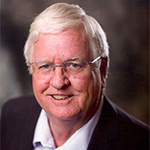 Robert N. Hartnett, ASLA
Robert N. Hartnett, ASLA
Public Works Department, City of Lee’s Summit, MO
In forty years of public service, Bob Hartnett has worked tirelessly at advancing the profession locally as the Deputy Director of Public Works for the City of Lee’s Summit, Missouri. During his tenure, the community’s population grew from 16,000 to 100,000. Bob has worked on nearly 100 projects, equating to over $150 million in public improvements. He has also sought to advance landscape architecture through numerous leadership roles at the state and national levels. His unflagging efforts led to the passage of state title and practice-law legislation for the profession. Since 2002, Bob has served on, and is now chair of, the Missouri Board for Architects, Professional Engineers, Professional Land Surveyors, and Professional Landscape Architects. He has previously served on the board of directors for the Council of Landscape Architectural Registration Boards and as vice chair for the Missouri Landscape Architectural Council. In 2011, the Prairie Gateway Chapter honored Bob with the Alton Thomas Award, the chapter’s highest honor given to an individual for their compelling efforts to promote or enhance the image of landscape architecture. Bob has demonstrated his passion for advancing the profession throughout his life and has influenced generations of landscape architects.
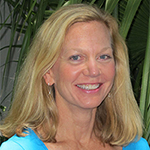 Julie Hensley, ASLA
Julie Hensley, ASLA
JHLA Design, Charleston, SC
For over thirty years, Julie Hensley dedicated her professional life to acquiring, managing, and planning parklands and open space, and creating a nationally recognized model for operating an ever-expanding park system with little reliance on tax subsidies for growth. As Director of Planning for Charleston County Parks, she added 6,000 acres, more than doubling the acreage of the Charleston County Park holdings. Julie also created a structure and process to provide sustainable stewardship of that public resource. Julie’s leadership contributed significantly to the Charleston Greenbelt Program, which has protected over 21,000 acres of land to date and purchased over 9,300 acres for future public parks and green spaces. In 2019, the ASLA Board of Trustees honored her with the LaGasse Medal for her career devoted to sustainable stewardship and her protection of thousands of acres of park lands and ensuring the longevity of valuable cultural and natural resources. Now the owner of her own firm, Julie continues to provide pro-bono services for parks and public landscapes. Her effective leadership and passion for open space and land conservation and her long-range vision and numerous park master plans will shape Charleston County for generations.
 Colie Hough-Beck, ASLA
Colie Hough-Beck, ASLA
HBB Landscape Architecture (Retired), Seattle
Colie Hough-Beck’s extraordinary commitment to the profession for over four decades has significantly influenced and engaged communities in understanding the importance of a landscape architect’s role in developing policies for sustainable growth and livability. In 1990 Colie established HBB Landscape Architecture, one of the first woman-owned planning and design firms in Seattle, focusing on public projects. The firm collaborated with multidisciplinary teams on some of the largest infrastructure projects in the state of Washington. Projects of note include SeaTac International Airport, Sound Transit Regional Light Rail System, Jack Block Regional Waterfront Park, and University Place Town Center. Colie has provided twenty-one years of student mentorship and faculty advice at the University of Washington, where she received an Honor Award for Significant Works and Deeds to the Department of Landscape Architecture and the Profession. She has also served on multiple boards and commissions, such as the Washington State 100 Year Centennial Advisory Team; the City of Seattle Design Review Board; two terms on the City of Seattle Planning Commission, where she was co-chair of the Land Use and Transportation Committee; and the Snohomish County Urban Centers Review Committee. A recipient of fifty-four design, planning, and communication awards, Colie’s dedication to the profession has been widely celebrated.
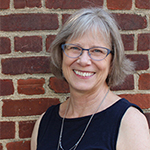 Laura L. Knott, ASLA
Laura L. Knott, ASLA
Laura L. Knott, Historical Landscape Architect, Charlottesville, VA
An award-winning landscape architect with a background in history and archaeology, and graduate training in historic preservation, Laura Knott has spent thirty years practicing landscape architecture in Virginia, Maryland, Arkansas, North Carolina, Illinois, and Texas, with a focus on taking a landscape approach to the treatment of historic properties located throughout the United States. Laura’s historic landscape project experience has involved hundreds of the nation’s most important cultural sites, including four World Heritage sites, twenty-three national historic landmarks, twenty-three national parks, and numerous properties listed in the National Register of Historic Places. She has guided the management, design, and interpretation of historic sites as diverse as the Hirshhorn Museum Sculpture Garden, Flamingo Developed Area in Everglades National Park, Tuskegee Institute, Little Rock Central High School, Cane River Creole National Historic Site, San Antonio Missions, University of Virginia’s Academical Village, and Pershing Park, the Washington, D.C. location for the National World War I Memorial. Through her projects, published works, and service, Laura has melded landscape architecture and historic preservation theory to understand, manage, and shape historically significant places across the U.S. She regularly collaborates with landscape architects, architects, and multidisciplinary teams to communicate the significance of cultural landscapes and to integrate these resources with designs for new interventions.
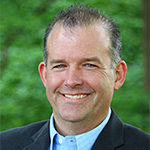 Matthew D. Langston, ASLA
Matthew D. Langston, ASLA
Landworks Design Group, Charlotte, NC
Matt Langston has led the profession at every level, effectively developing and defending policies to enhance the status of landscape architects statewide and nationally. His leadership on North Carolina’s Landscape Architecture Practice Act was critical to its success and he became a sought-after adviser for other states’ licensure efforts. Matt served as member-at-large for legislative affairs in the state chapter for many years. He founded and was treasurer of the North Carolina Landscape Architects Political Action Committee for sixteen years. At the national level, during his time as an ASLA trustee, Matt served on and chaired the Government Affairs Advisory Committee. His leadership extends to his work in building bridges with allied professional organizations, such as the North Carolina Bar and Design Professionals Liaison Committee, the North Carolina Recovery Coalition, and the Wildlife Friendly Development Program. His valuable insights and practical solutions to the urban forestry staff were instrumental in updating the City of Charlotte Tree Ordinance. In addition to his extensive work at a policy leadership level, Matt cofounded and serves as president of Landworks Design Group, a multidisciplinary design firm, where he manages operations and mentors young landscape architects.
 Joy Lyndes, ASLA
Joy Lyndes, ASLA
Coastal Sage Landscape Architecture, Encinitas, CA
Joy Lyndes’ multifaceted career and service to the community and profession, as well as her teaching and mentoring, have demonstrated that landscape architects are leaders in solving complex community issues. Her advocacy work reflects her belief that policy leads practice and advances better futures for our communities. In private practice, her firm focuses on designing healthier, more-resilient communities, while integrating diversity, inclusivity, and family support. Joy’s work has addressed sea level rise, coastal ecology, stormwater management, equity, affordable housing, endangered species, and water conservation. Her leadership positions include the 2020 Chair of the Landscape Architectural Accreditation Board the 2020 Government Affairs Liaison for the California Council ASLA, serving as an Encinitas Environmental Commissioner, and leading the organization of the inaugural Cyclovia Encinitas 2020. Joy trains community groups, leads citizen workshops, and mentors professionals and students, sharing her wide range of knowledge of landscape architecture and climate literacy, thereby fostering a new generation of land stewards. Her strong understanding of the profession and an ability to communicate effectively, coupled with her service and design work, resonates with and enriches the lives of people in communities while also honoring shared and layered histories.
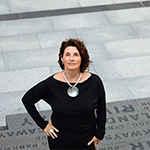 Katharine V. Martin, ASLA
Katharine V. Martin, ASLA
Klopfer Martin Design Group, Boston
In nearly twenty-five years of practice, Kaki Martin’s career has focused on the design and delivery of projects that engender and support community, while creating unique, highly crafted places. From the scale of the urban streetscape, the intimate neighborhood park, or the community-wide destination park, Kaki has transformed neighborhoods with designs that demonstrate a mastery of the art, stewardship, and social responsibility of landscape architecture. Her built work exemplifies strategic thinking, conceptual-yet-clear responses to sites, and a collaborative approach to the design process, transforming sites and creating influential models of design excellence, primarily in the public sector. Kaki is an editorial board member of Architecture Boston, a board member of the Community Design Resource Center, and president-elect of the BSLA. Through teaching, lecturing, serving on local commissions, participating in local and national workshops and panel discussions, and many volunteer endeavors, Kaki is a mentor and strong advocate for the next generation of landscape architects. Her work has been recognized across disciplines, including architecture, historic preservation, and planning. Among her successes are award-winning projects such as the Steel Yard, Providence, RI; Fisher Hill Reservoir Park, Brookline, MA; and Central Square, East Boston, MA.
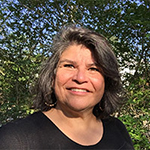 Laura Solano, ASLA
Laura Solano, ASLA
Michael Van Valkenburgh Associates, Inc., Boston
Throughout Laura Solano’s thirty-seven years as a landscape architect, she has demonstrated leadership in all aspects of the profession—practice, academia, service, and mentorship. Laura is a nationally recognized expert in landscape technology and leads Michael Van Valkenburgh Associates’ technological innovations, which have been essential for advancing the firm’s design excellence alongside sustainable and resilient performance. Laura is also an expert in the design of planting soil, having worked for over twenty-five years on dozens of urban fill projects with the belief that the best landscapes support the daily life of cities. Recognizing that landscapes are intertwined natural systems, she uses the physical sciences to support her hands-on approach to soil. Among the many award-winning projects that she has led are Gateway Arch National Park, St. Louis; Port Lands Flood Protection Project, Toronto; and George W. Bush Presidential Center, Dallas. Through her leadership on multiple notable works built over decades of practice, she has demonstrated how excellence in landscape design and performance can be delivered in unexpected ways, adding joy to the everyday lives of people. Laura brings an unrelenting optimism to both her work and to her belief that landscape architecture can bring about meaningful change.
 Chip Sullivan, ASLA
Chip Sullivan, ASLA
University of California, Berkeley
For more than three decades, Chip Sullivan has developed a unique pedagogy in landscape architecture education by merging art, nature, and environmental consciousness. His focus has been to teach people how to see the landscape and to channel that awareness of landscape into artful and sensitively designed work. Chip’s professional reputation is also based on his own masterful skill at landscape visualization and representation. His book, Drawing the Landscape, now in its fourth edition, is a key text for students worldwide. His artwork has been exhibited in over seventy galleries in the United States, Canada, and Europe. Since 2013, Chip has been a co-organizer and co-leader for the popular “sketch crawl” workshops at ASLA annual meetings. In 2016 he received the ASLA Jot D. Carpenter Teaching Medal and in 2018 was elected to the College of Fellows by CELA. Early in his career he received the Rome Prize from the American Academy. His recent book, Cartooning the Landscape, serves as an opus of his teaching and professional philosophy. Through the lens of drawing, Chip is dedicated to ideals of sustainability and beauty and through impassioned teaching strives to use the power of landscape architecture to create positive change in the world.
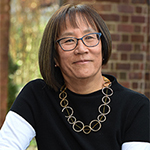 Nancy A. Takahashi, ASLA
Nancy A. Takahashi, ASLA
University of Virginia, Charlottesville
Since 1986, Nancy Takahashi has dedicated her life’s work to building one of the top programs in the country and educating many generations of students. Nancy’s dedication includes successfully advocating for more effective student advising programs to address the physical and mental health of students; organizing all-department annual field trips to expose students to offices and built projects in New York City; and working tirelessly to engage alumni with reunions and fundraising. At UVA, she has provided pro bono services to many landscape projects and served for ten years as chair of UVA’s Arboretum and Landscape Committee. Designing landscapes for the underserved and victims of social injustice has also been a core theme of Nancy’s service contributions. From projects that include First Lady Michelle Obama’s White House Kitchen Garden, where inner-city children learn about healthy food choices, to interpreting forgotten histories at the Poston Internment Camp in Arizona, where her father’s family and 17,000 other Japanese Americans were imprisoned during WWII, or her current design and planning work with a coastal community in West Africa addressing climate change and population growth pressures, she has devoted her leadership and energies to projects and causes that seek to right the wrongs of social histories.
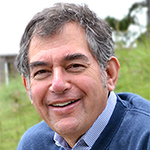 John S. Troy, ASLA
John S. Troy, ASLA
John S. Troy Landscape Architect Inc., San Antonio, Texas
John S. Troy has practiced landscape architecture in the San Antonio area since 1981, where his contributions, dedication, and service are profound and enduring. After beginning his career as a professor, he developed a robust residential practice, became a public voice for sustainability, and helped lead the transformation of the San Antonio Botanical Garden (SABG) into a nationally recognized horticultural showcase. Since 1994, John has provided sustained planning and guidance in shaping the development of an eight-acre phased expansion of SABG’s original thirty-acre property. Through John’s vision and efforts, SABG is now an exemplary regional botanical garden, its design having been recognized by Texas ASLA with a 2019 Honor Award. In 2017, he founded the Landscape Architecture Advisory Council to foster a rare collaboration among the ASLA South Texas chapter, the San Antonio Water System, and SABG education and conservation staff to focus on water conservation, sustainability, landscape design, education, and broadened information on plants in the Garden. Throughout his career, John has pioneered and promoted water conservation with the use of native plants and low-water-use landscape design. John’s continuous, active, pro-bono service promoting the transformative power of landscape architecture spans four decades and was recognized with the Texas ASLA Community Service Award.
 Dawn Uchiyama, ASLA
Dawn Uchiyama, ASLA
Bureau of Environmental Services, City of Portland, Oregon
Dawn Uchiyama has dedicated her career to advancing innovative stormwater infrastructure planning and design using landscape, spearheading Portland’s evolution as a world leader in that realm. As Deputy Director of the Bureau of Environmental Services—with over 600 employees and a $500 million annual budget—she has facilitated inclusive organization-wide strategic planning and diversity, equity, and inclusion awareness to improve both the internal and external work culture. Her efforts have supported improved design outcomes in all aspects and at all scales of public infrastructure—from pipes to green stormwater management to watershed restoration. Dawn’s early career focused on parks, natural areas, and trails, with an emphasis on community engagement and education, as well as watershed and stream protection and restoration. She integrated these foundational practices with emerging ideas for stormwater management, including facilitating a citywide effort to create the first published design details and specifications for green streets. Known for her commitment to collaboration and inclusivity, Dawn repeatedly demonstrates the value landscape architecture brings to public service and infrastructure provisioning by working creatively across disciplines as a designer, a leader, and a systems thinker.
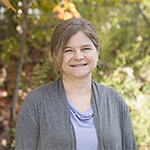 Brenda Williams, ASLA
Brenda Williams, ASLA
Quinn Evans, Madison, Wisconsin
Brenda Williams is recognized as a national leader in the conservation of cultural landscapes and advancing the role of landscape architects in their planning and design. Throughout her thirty-year career, she has developed award-winning design, planning, and stewardship solutions for significant cultural landscapes at national parks, national historic landmarks, and sites of regional and local importance throughout the United States. Her work has a strong emphasis on landscapes in the public realm, where she champions appropriate access, recognition, preservation, adaptation, and interpretation of culturally significant sites. Brenda developed the Cultural Landscape Master Plan format and process that integrates thorough documentation and analysis with master planning in a streamlined approach. She also pioneered the integration of National Environmental Policy Act standards and processes into Cultural Landscape Reports. Within interdisciplinary planning and design teams for large complex projects, she facilitates the development of inspiring cultural landscape solutions, such as her leadership in the $500-million rehabilitation of the Smithsonian’s Air and Space Museum on the National Mall. Brenda lectures extensively, conducts workshops, mentors students, and participates in targeted volunteer activities nationwide.


